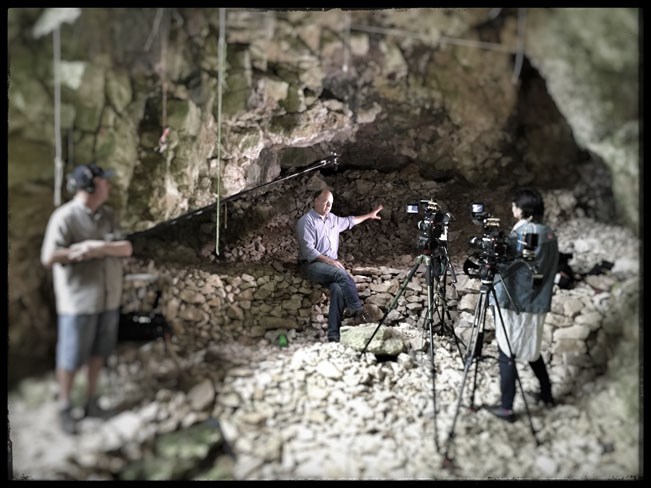Scientists gain an understanding of the role music plays in human's lives.
PREVIEW
I Got Rhythm: The Science of Song
Sunday, Oct. 22 at 2 p.m.
Arden Theatre
5 St. Anne Street
Tickets: $20 adults, $15 students. Call 780-459-1542 or at http://www.ticketmaster.ca
Music is everywhere – televisions, cars, elevators and malls. We sing in the shower or hum and whistle while doing chores.
A need to express ourselves or to be cocooned by music's soothing rhythms gives us hope and tempers the day. It is intrinsic to who we are.
Sherwood Park filmmaker Connie Edwards spent the greater part of a year speaking to researchers who explore how music links to our brains.
In Dec. of 2016 her 45-minute documentary
I Got Rhythm: The Science of Song aired on CBC TV's
The Nature of Things. On Sunday, Dec. 22 it will screen at the Arden Theatre.
"Music is a reflection of our humanity. Science is about facts, but music is not tangible or quantifiable and it causes us to react in a different way. Even for myself, music is such a release of emotion. It's a language that is most effective in communicating things that you can't express in other ways," said Edwards.
In this passion project, the indie filmmaker visited LIVELab in Hamilton, Ontario where scientists measured the brain waves of musicians and their audiences.
Just a short jump to Detroit, Edwards spoke to a deaf rapper who carved a successful career writing, recording and performing.
And in Australia researchers discovered aggressive heavy metal music actually calms and reduces hostility – the exact opposite of popular perception.
"One of the favourite places we went to was in Germany where pieces of a 40,000-year old flute were discovered," said Edwards.
The director-producer travelled with a team to Hohle Fels cave, a Stone Age cave in the Swabian Alps. Back in 2008, archeologist Nicholas Conard discovered a vulture-bone flute and fragments of mammoth ivory flutes.
The startling discovery suggested the musical instruments were a tribal staple and their craftsmanship was highly prized among our early ancestors.
"We brought in Anna Friederike Potengowski to play a replica of the flute in the cave. It was incredible. You felt as if you might be sitting and listening to what people in those times listened to," Edwards said.
While
I Got Rhythm aired one year ago, the seeds of curiosity were nurtured decades ago. As Edwards tells it, "I lived and breathed music. I was a girl singer doing the lounge circuit. It tried to be the next Barbra Streisand. I was sent to Ponoka and the bars wanted Dolly Parton," she laughs.
Although the curtain dropped on a singing career, Edwards never stopped believing music was "inherent" to our nature.
"But 20 years ago there was nothing scientific to base my assumptions on, nothing to hang my hat on."
Today numerous researchers across the world use scientific methods to further their understanding of how music plays in our lives.
In the documentary, Edwards visits researchers in the United Kingdom that set up a singing study therapy group for seniors diagnosed with Chronic Obstructive Pulmonary Disease, a debilitating lung disease.
"Seniors met and sang together on a regular basis. The singing therapy helped build lung capacity. Seniors reported anecdotes of feeling better breathing. And it worked socially."
Across the North Sea in Sweden, a researcher and musician discovered that choirs singing certain melodies in tandem cause their hearts to synchronize. Music indeed has a profound effect on humans.
After the 45-minute screening of
I Got Rhythm: The Science of Song, Edwards will host a Q & A. As well, there will be a live performance by Kita No Taiko drummers.




